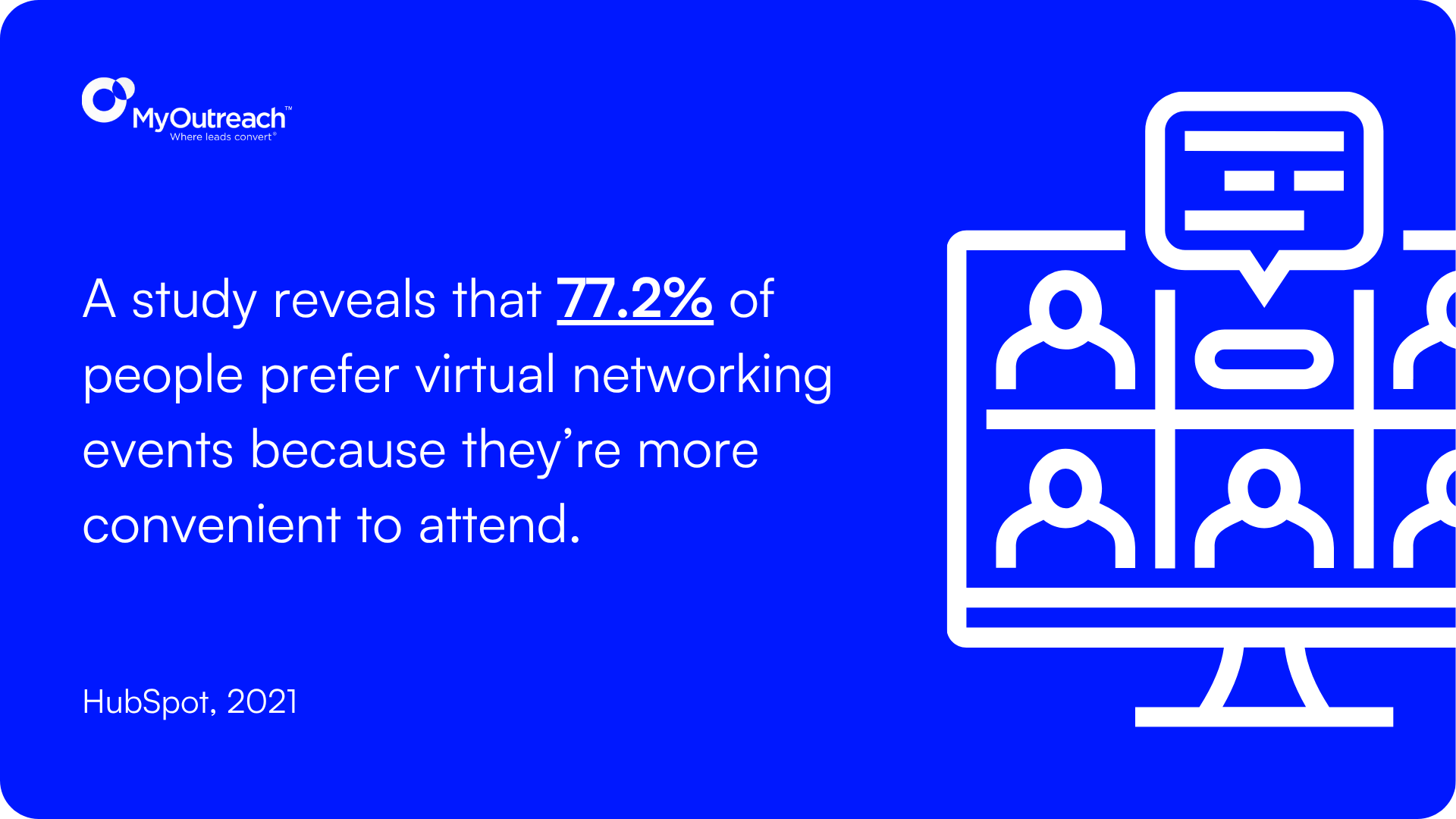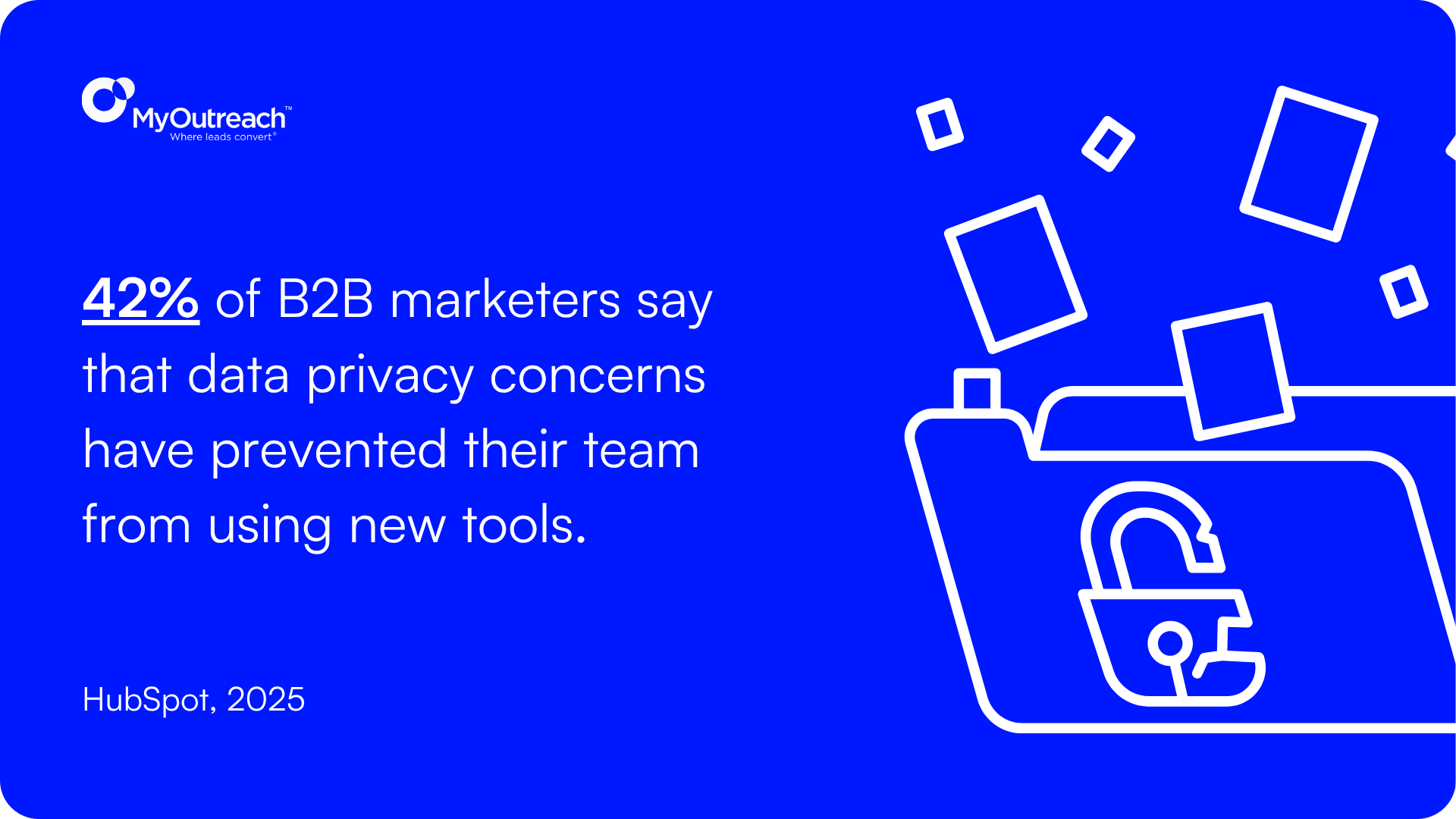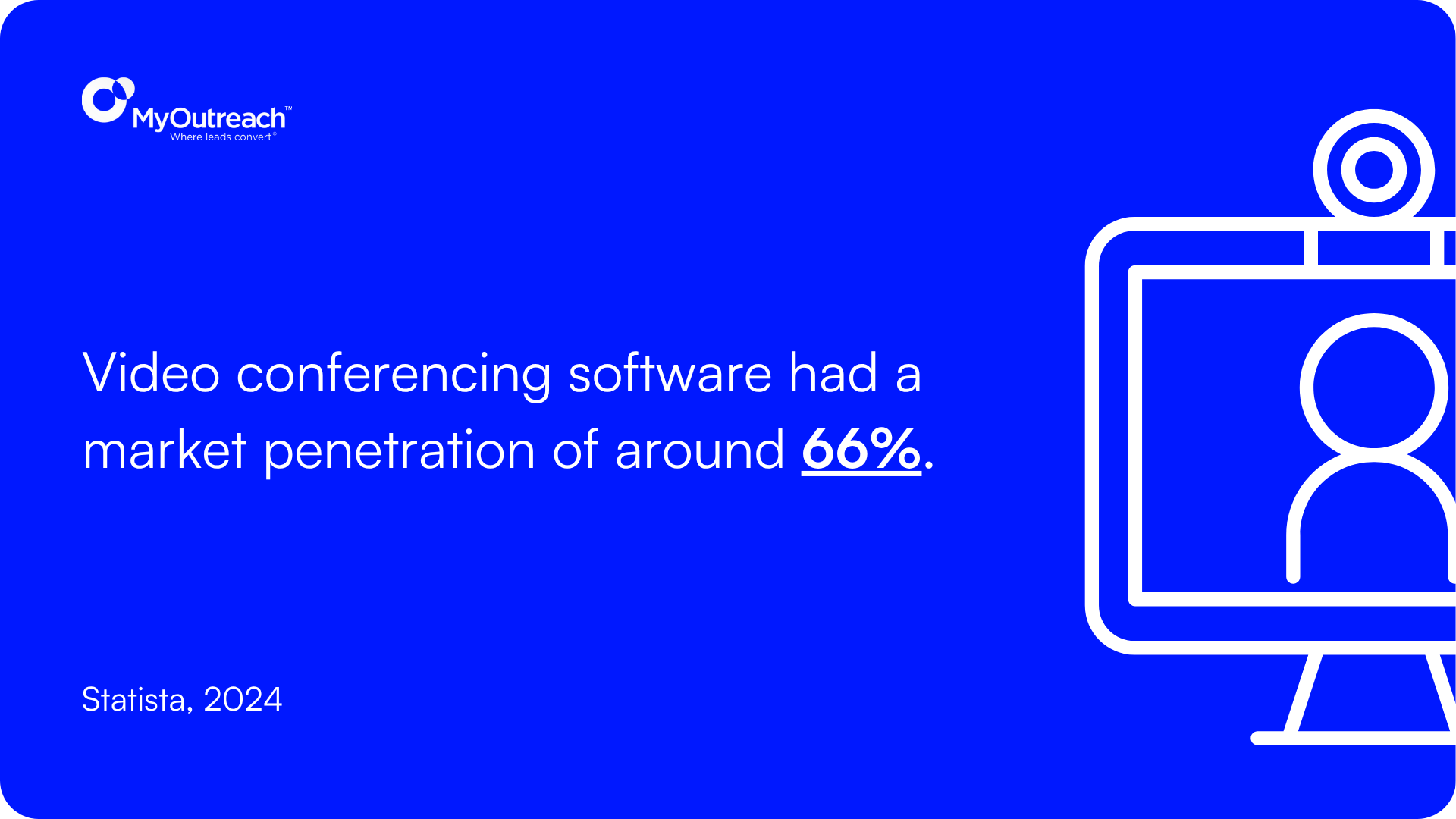A study reveals that 77.2% of people prefer virtual networking events because they’re more convenient to attend. B2B teams are building professional relationships in entirely new ways that break down geographical barriers and create opportunities to connect with their peers worldwide.
In this blog post, we’ll discuss how you can host impactful virtual networking events. You’ll learn 8 tactics for engaging attendees, platforms you can use, designing interactive sessions, and following up effectively to maintain connections.
Understanding Virtual Networking Events
Unlike traditional networking, virtual networking operates entirely online, allowing communication from anywhere, on any device. You can meet and connect with attendees.
What is a Virtual Network & How Does it Work?
A B2B virtual networking event is a dedicated gathering where professionals and businesses come together to form meaningful connections, build mutually beneficial relationships and share industry insights.
These events typically involve structured networking activities, such as group discussions, workshops, one-on-one meetings, and seminars focused on industry challenges or opportunities.
We'll discuss platforms and interactive tools in the following sections below that can help make virtual networking events more engaging and less robotic.
📊 In 2024, video conferencing software had a market penetration of around 66%, highlighting how important virtual communication has become.

Differences Between Virtual & In-Person Networking Events
In-person events happen at specific locations and dates. Requiring attendees to travel increases costs and limits participation. They also offer face-to-face interactions and hands-on experiences. And the energy of being in the same room with peers.
On the other hand, virtual networking events are accessible from anywhere and can be scheduled at any time or occur spontaneously. They enable teams to connect across different time zones, reduce travel and accommodation expenses, and often provide interactive tools such as polls, breakout rooms, and live Q&A sessions.
Choosing the right event format can make or break your engagement strategy.
In-person events build personal rapport, while virtual events make networking more flexible, scalable, and inclusive.
📖 Useful Read: Webinar Best Practices: A B2B Marketer’s Blueprint
How to Host a Virtual Networking Event
Hosting a successful virtual networking event is about creating meaningful connections with your attendees. Strategic planning, active engagement, and timely follow-ups are key to achieving great business outcomes.
Create an Attendee Profile
Define who should attend the event. Think about industry, job role, seniority level and business goals. Clear attendee profiles ensure that you attract participants who will benefit from this event, leading to high-quality interactions.
Prepare your Team & Invitations
Before the event, ensure that your company's and team's LinkedIn profiles, as well as other professional profiles, accurately reflect your expertise, role, and company value. Attendees may look up speakers or hosts before joining, so a professional online presence helps build trust and credibility, reinforcing your brand both during and after the event.
After polishing your online presence, it’s time to invite the professionals you want to your virtual networking event. Encourage your team to reference shared interests (e.g. industry challenges or relevant projects) and clearly state why you’re inviting them. Personalised invitations increase the likelihood of receiving responses.

Engage Attendees with Icebreakers & Polls
Once attendees are invited and interested, it’s time to make your event interactive and valuable from the moment it starts.
Use simple and fun icebreaker games like “Would You Rather?” (e.g. “Would you rather host an event with 500+ participants, or a small, highly curated one with 25 participants?”) or “Two Truths & A Lie” (e.g. “I once pitched to a client while skydiving” “I’ve met a Fortune 500 CEO” “I’ve appeared on a business podcast”) create a relaxed atmosphere.
Live polls boost interaction and gather quick feedback. LinkedIn shows these polls generate the highest impression rates.
Provide Value to Attendees
A successful B2B virtual networking isn’t about showcasing your company - it’s about providing value to your attendees. When participants walk about with new knowledge and meaningful connections, they’re more likely to remember your brand positively.
During the event, your team can:
- Share insights that help attendees stay ahead of industry trends.
- Introduce participants to peers with similar goals or complementary expertise.
Encourage Video Participation
Ask attendees to keep their cameras on during the event. Seeing faces builds trust and replicates the in-person experience of eye contact.
📖 Useful read: B2B Guide to Planning & Hosting a Virtual Roundtable
Maximise Post-Event Engagement
After the event, it’s best to follow up within 24 hours. You can maintain and grow connections by:
- Connecting on LinkedIn with personalised notes that reference your conversation.
- Sending thank-you emails and a digital business card.
- Inviting attendees to future networking events to continue conversations and deepen engagement.
Thoughtful and timely follow-ups ensure that your networking efforts turn into lasting professional relationships.
8 Virtual Networking Event Ideas
The right event ideas can help you create meaningful virtual networking opportunities to engage, build trust and strengthen relationships with your attendees. Let’s break down the 8 tactics you can use.
1. Host Virtual Coffee Chats
Similar to in-person meetups - invite small groups of professionals for casual, 15- to 30-minute online chats. Keep it relaxed and engaging. Let your attendees ask you questions, share challenges and get to know your team.
2. Use Breakout Rooms During
Smaller groups of 4 to 6 professionals allow more meaningful conversations. Provide discussion topics related to their industry challenges or goals.
3. Run Themed Networking Sessions
Organise virtual networking events such as industry trivia, problem-solving challenges, or innovative workshops. Themes create conversations and memorable experiences.
4. Organise Speed Networking
When hosting a virtual networking event, structure quick, timed conversations so attendees can meet multiple representatives from your company efficiently. Use rotation systems and prepared conversation prompts to ensure discussions stay smooth, relevant, and valuable for both your team and audience.
5. Create Interest-Based Virtual Communities
Consider setting up dedicated communities on platforms like LinkedIn Groups or Slack channels. Segment your audience by industry roles or specific interests to maintain ongoing engagement, encourage deeper discussions, and create opportunities for shared learning beyond the event itself.
6. Use Collaborative Tools for Interactive Sessions
When hosting, incorporate tools like virtual whiteboards, live polls, or interactive workshops to engage your audience actively. These activities encourage co-creation, push meaningful discussions, and strengthen attendees’ connection to your brand.
7. Rotate Team Hosts in Meetups
Have different team members lead sessions. This showcases your company’s diverse expertise, brings fresh perspectives to each discussion, and keeps sessions interesting.
8. Schedule Cross-Industry or Cross-Company Networking Hours
Organise sessions that bring professionals from related sectors together to share insights and experiences. This facilitates valuable connections and positions your company as a central hub for industry knowledge and networking opportunities.
Choosing the Right Virtual Networking Platforms
Selecting the right platform is a key aspect of a successful virtual networking event. Your platform should align with your networking goals.
Key Features to Look for In Virtual Networking Platforms
Look for platforms that offer interactive tools, such as live chat, Q&A functionality, and polling capabilities. Virtual networking lounges and breakout rooms allow for more personal conversations with your attendees.
Customisation options for branding and registration forms help you create experiences that match your organisation’s identity.
Detailed events should have platforms that support both live streaming and on-demand content with high-quality video and audio playback.

Comparison of Top Platforms: Remo, Gather, Zoom & Kumospace
- Remo: Features virtual tables for small-group networking, 80+ floor plan designs, and audience engagement analytics.
- Gather: Offers interactive floor plans with built-in icebreaker games, allowing users to control their audio experience.
- Zoom: Known for reliable video conferencing, breakout rooms, polls, and Q&A sessions for focused discussions.
- Kumospace: Excels at collaboration with live chats; widely regarded as a leading virtual meeting platform.
📖 You might also like: Top 8 Virtual Event Platforms (Pricing + Features)
Security & Privacy Considerations
📊 42% of B2B marketers say that data privacy concerns have prevented their team from using new tools.
Ensure the platform you use has end-to-end encryption, secure authentication, and is GDPR compliant. Evaluate how user data is stored and processed, especially if sensitive information is shared during networking events.
Conclusion
Virtual networking is a powerful way for B2B teams to connect with peers worldwide and create meaningful, mutually beneficial business relationships. The right approach turns online interactions into positive business outcomes.
Active participation is key - polls, icebreakers, video engagement and clear engagement goals help turn passive audiences into engaged attendees.
High Impact Virtual Networking with MyOutreach
At MyOutreach, we support B2B companies in running a variety of virtual events. Our team manages logistics, attendee coordination and engagement strategies, helping you deliver professional and impactful experiences every time.
Among these, we can also help you host an impactful virtual networking event where we can match attendees with shared goals and provide follow-up support. This way, your team can focus on building relationships rather than managing event details.
Are you ready to host a high-impact virtual networking event? Then, let’s talk!
FAQs
Q1. What are the key elements for successful B2B virtual networking?
The three key elements are visibility, relevance and follow-ups. Maintain visibility through the consistent hosting of virtual networking events, ensuring interactions are relevant to the audience's needs, and follow up strategically to turn initial conversations into follow-up opportunities.
Q2. How can I ensure effective communication with my audience virtually?
Communicating effectively by choosing the right digital tools for meetings and messaging. Be concise and clear, personalising messages to individual references, scheduling predictable check-ins or touchpoints, and defining next steps and actions after each interaction.
Q3. What are some engaging virtual networking activities for B2B audiences?
Engaging activities include hosting virtual coffee chats or roundtables with key decision-makers, using breakout rooms for focused discussions, organising interactive webinars, running speed networking sessions, and creating interest-based virtual discussion groups aligned with industry topics.



.png)

.png)






